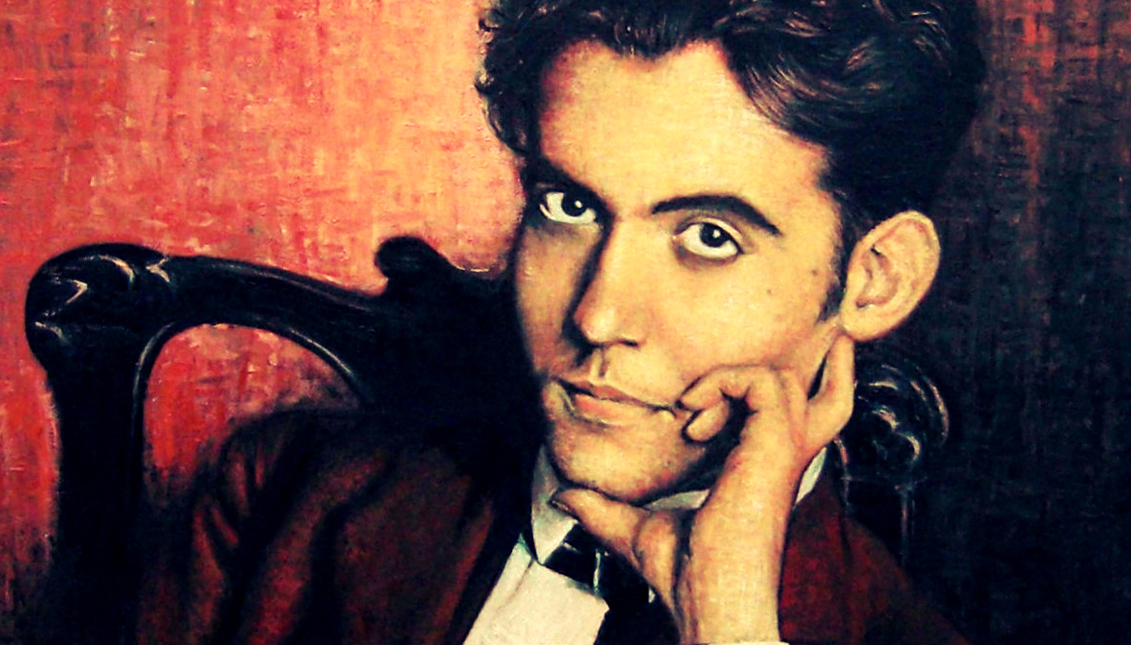
OP-ED: Federico García Lorca; "the poet without a grave"
There are those who say that the fame of Garcia Lorca would not be the same, not because he was shot, or murdered rather, a few days after he was initiated
MORE IN THIS SECTION
There are those who say that the fame of Garcia Lorca would not be the same, not because he was shot, or murdered rather, a few days after he was initiated into the Spanish Civil War. The truth is that he was famous in all of Latin America much earlier. In fact, the embassies of Mexico and Colombia offered him asylum when the war exploded and he rejected both.
Federico García Lorca was born on June 5th, 1898 in Víznar, and was shot the August 19, 1936. In 1915, he began to study philosophy and letters, as well as law, at the University of Granada. It was part of El Rinconcillo, a meeting of artists from Granada Centre where he met Manuel de Falla. Between 1916 and 1917, he made a series of trips to Spain with his classmates, including Antonio Machado. In 1919, he moved to Madrid and lived in a residence hall, where he resided with numerous writers and intellectual that came to be known as the "generation of the 27."
Son of Federico García Rodríguez, a farm owner, he was born during his father's second marriage to Vicenta Lorca, a teacher on leave of absence. He was the eldest of five brothers. The second died at age two, a victim of a pneumonia, but his brothers were Francis, Concepcion and Isabel remained. He was baptized with the name of Federico of the sacred heart of Jesus Garcia Lorca. He suffered illness and physical problems that prevented him from running or playing with friends, and he had not learned to walk until he was 4 years of age. In 1918, he published his first book, "Impresiones, and paisajes" and in 1920, opened his first drama, "El hex of the mariposa", at the Teatro Eslava in Madrid. His first poems appeared in "book of poems", in 1921.
In 1922, he teamed up with the Composer Manuel de Falla, the first festival of singing flamencos, and that same year wrote precisely the "poem of the cante jondo", although he would not publish it until 1931. The first "Gypsy Ballads," made in 1928, is an example of poetry composed from popular materials. As a poet in New York, he wrote it between 1929 and 1930, but that would not be published until 1940, edited by "Bergamin" the first time in Mexico. "Earth and Moon" was written in 1934, although it was published posthumously. Later on, his "Crying by Ignacio Sánchez Mejías" was composed in dedication to the dying the Bullfighter in 1935. Six Galician poems, appeared the same year. Prior to the poems, he wrote other works between 1921 to 1928, including the "tragicomedy of don Cristobal" and "Retablillo of don Cristóbal", with puppetry, dancing and more. In 1930 and 1931, the dramas "the public" and "so pass five years", were works that used complex psychological themes. He also wrote two rural tragedies, "wedding in blood" from 1933, and "barren" in 1934. In "Doña Rosita", written in 1935, he addressed the problem of spinsters, a theme that also appears in "the House of Bernarda Alba", completed in June of 1936, a critical piece that is often considered the fundamental work of Lorca.
With a group of intellectuals from Granada Lorca founded the magazine "Gallo" in 1928, of which only two copies were published. In 1929, he traveled to New York and Cuba. Two years late,r he founded the University Theater Group La Barraca, to bring together theater lovers, and in 1936 returned to Granada where he was arrested and shot for his liberal ideas.
The cause of his death has always been clear. He was considered a dangerous and offensive figure because of his declared homosexuality, and by his progressive statements against the Republic. The ideas and the fanaticism ignorant were the real causes of the death of the poet.
He wrote poetry as well as theater, but focused more on theater in the end, not only in the creation and writing but also in the staging and the mounting. His first books of poetry were more modernist, following in the footsteps of Antonio Machado, Rubén Darío and Salvador Rueda. In a second stage, he joined the avant-garde modernism.
At the start of his career, he wrote two modernist dramas, the hex of the Butterfly (1920) and Mariana Pineda (1927). In the year 1925, he spent Easter in Cadaqués with Salvador Dalí and his family where he wrote "El Paseo de Buster Keaton". In 1929, he traveled to the city of New York, an experience that marked him deeply. In 1933, he moved to Argentina, where he conducted performances of his works in Buenos Aires. In this same year, he published "Oda to Walt Whitman", in Mexico. When he returned to Spain, he wrote theatrical works and was director of the Theater Department at the University the Barraca. His anti-fascist positions and fame turned him into a fatal victim of the Spanish Civil War.
On July 18th,1936, at the beginning of the war, there was a spiral of hate and violence that had been brewing from some time back. The murder of García Lorca is not justified at all, although the reason can be explained. On the dawn of July 19, 1936, he met farmers killing laborers and saw workers burning churches and priests in large cities before the barbaric lynching broke out.
Reviled, maligned and pursued, are hid in the House of the family of the poet Luis Rosales, paradoxically considered supporters of the uprising of Francisco Franco, that gave home to the Guerra Civil Spanish.
On August 16,1936, he was arrested and held in the headquarters of the Civil Government of Granada, for nationalist revolt. Hours later, he was transferred it to the Sierra of Alfacar, and shot next to a teacher's school, all because of Republican ideology.
It is unknown the authorship and identity of his killers. His body has never been found, and thus it has been impossible to clarify the details of the crime. Federico García Lorca was never affiliated with any political party, or ever held rallies, as his friends such as Rafael Alberti or Miguel Hernández did in those ominous and cruel times.
Garcia Lorca was hated mainly for being homosexual, and defending the Gypsies in his "Romancero Gypsy", and to the black Americans in his "a poet in New York". To justify the firing squad, he was accused of being a spy for the Soviet Union under the orders of Stalin.
Garcia Lorca is considered the best Spanish poet and dramatist of the century, and perhaps of all the Spanish literature since the end of the period Baroque. He used words and metaphors to shake up the traditionalism, and convert them into modernist poetry and theater.
In regards to his theatrical work, Lorca employed lyrical, mythical and symbolic features and resorted both to popular songs as puppetry. In his theater, the visual is as important as linguistic, and always dominates the drama.
Towards the end of the year 1939, the Lorca family managed to register his death inthe Civil War record. on April 21, 1940, the officially registered the death of the poet. The document reads: "died in the month of August of 1936 in consequence of wounds produced by war".
Currently with Pablo Neruda, Federico García Lorca is considered as the most read Spanish poet of all time.






LEAVE A COMMENT:
Join the discussion! Leave a comment.